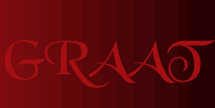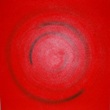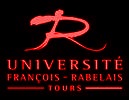
![]()
Nigel Hamilton, How To Do Biography: A Primer (Cambridge, Mass.: Harvard University Press, 2008). USA $22.95, 379 pages, ISBN 978-0-674-02796-1 – Trevor Harris, Université François Rabelais, Tours.
Biography
remains immensely popular and, in this handsomely presented little
book, Nigel Hamilton sets out to fill what he sees as an important
gap – though he looks to have missed, for example, Brian D.
Osborne’s similarly pedagogic Writing Biography and Autobiography
(London: A & C Black, 2004).
How To Do
Biography is presented as a “sequel” to Biography:
A Brief History (2007), with the same publisher. Hamilton’s
text is accessible, even chatty in places, and his advice seems hard
to fault, at least from the point of view of the hesitant novice –
clearly the audience he has in mind. He takes us – Part I Getting
Started – through a brief, basic training (definition, aims,
target audience, research methods, conception and design), then illustrates
his main points, at some length (Part II Composing a Life Story),
with examples and long quotations from published biographies, before
dipping briefly into the related genres of memoir and autobiography
(Part III Variations on a Theme). One clearly senses the practising
teacher behind the author here, and the chapters of the book read
like a series of lectures from which the book may well have been derived.
Throughout,
Hamilton’s conviction and enthusiasm for his subject are clear
and make for a lively and refreshing read. He intended to produce
a book that would be “readable”, “useful”,
“practical” and “worthwhile”: on these four
counts, he has achieved a good measure of success and, as is so often
the case, the approachability of the style hides a considerable erudition.
If the book sets out to be simple, it would be unfair to present it
as simplistic and one is tempted to go along with Hamilton’s
permanently inferred and occasionally voiced irritation with the intellectual
snobberies which often greet vulgarization in any form: as he rightly
points out, biography can still find it difficult to shake off charges
of academic levity.
Hamilton’s
main aim is to give his reader clear pointers as to what is necessary
and what is acceptable when writing biography, and to combine this
with underlining some of the more common pitfalls and risks attending
the exercise. This works well in Part I, but in the second (and longest)
section of the book, Hamilton elects to proceed by dint of examples
taken from biographies already in print, in order to illustrate the
points he is trying to make. But one does wonder if the illustration
has not rather got in the way of the explanation and relegated it
to a somewhat ancillary role. He is right, surely, to emphasise the
difficulty in finding a potential publisher, to hammer home the need
for sound preparatory work in the library and archive, to point up
the crucial planning stage which will give an attractive “shape”
to the work: to emphasise, above all, the patience and method –
even courage –which must accompany the biographer all the way
to the intricacies and frustrations of the publication process, and
beyond, since the author’s relationship with his work takes
on a new, and occasionally troublesome dimension at that point.
But,
if all of this is obviously apposite, is there such an overriding
need for all the examples? One could say that so many successful,
polished illustrations of how to do it might actually discourage our
putative novices rather than energise them or buoy them up. There
is no doubting the extent of Hamilton’s commitment or knowledge
of his field: as well as quoting many contemporary biographers, he
sends us back to Boswell and – especially – to Dr Johnson
(evidently Hamilton’s nec plus ultra), and thence to antiquity,
quoting or alluding to Xenophon, Tacitus, Suetonius and Plutarch.
Might not Hamilton have achieved his aim by also/instead quoting a
few more unsuccessful biographies? There is a sense in which, perhaps
in spite of himself, Hamilton leaves the reader in awe of the biographical
canon.
Another
snag which Hamilton hits is his attempt to keep biography on an even
keel between history and literature, such as the historical novel.
In practice, Hamilton seems to err towards the latter on a number
of occasions, emphasising the need for suspense, seduction and the
search for an individual “voice” in order to produce “a
work of true art” [120]. That said it is never entirely clear
where Hamilton really feels biography belongs. And in underlining
the need to “move” the reader, to keep the reader’s
needs constantly in mind, Hamilton inevitably finds himself recognising
the importance of the consumer-led biography, rather than the disinterested
project which imposes itself by the sheer weight of its intellectual
necessity… But this is no doubt an instance of the carping and
fault-finding he is keen to criticise passim.
To be fair, Hamilton is at pains, particularly when addressing the
question of memoirs and autobiography, to ward the reader firmly off
sensationalism or going in search of any kind of salacious controversy.
In addition, although he is reducing many of his observations so that
they comply with a relatively conservative intellectual comfort zone,
he none the less alludes several times to the writerly dimension of
biography: the need not only for a certain amount of talent, but also
for intellectual probity and moral integrity. Furthermore, he is keen
to stress the sense in which the interest of biography as a genre
lies not merely in its portrayal of the subject of the life in question,
but also in what it tells us about the biographer. He suggests further
that lives, well written, “speak, indirectly, to our own lives–the
fundamental purpose of serious biography” [237].
Thus,
if Hamilton’s own book illustrates the difficulty of striking
a balance between commercial and scientific imperatives, it is also
acutely conscious of the need to discuss the merits and demerits of
public knowledge of private facts. The line beyond which one should
not stray is very difficult to draw and, as Hamilton admits, is bound
up with the very notion of what a democratic society should be. In
addition to its declared objective – providing a useful mode
d’emploi for aspiring biographers – the book reminds us,
therefore, that biography is itself a fascinating constituent of any
country’s/civilisation’s intellectual history. It both
illustrates, and casts an anxious gaze towards, the contemporary political
culture. In the end, by returning periodically to these themes, Hamilton,
having shown its literary qualities, pulls biography back in the direction
of social and cultural history.
How
To Do Biography, written by one of America’s best-known
biographers, is certainly an interesting book. Hamilton, perhaps,
is trying to answer some of his own critics here. In the age-old argument
about whether a given biography should hold up its subject as an example
to be commemorated, admired and adored from a distance or, rather,
get in close and shine a light on the subject’s most unseemly
blemishes, Hamilton certainly seems to come down, for the present
at least, on the side of the latter.
© 2009 Trevor Harris & GRAAT



